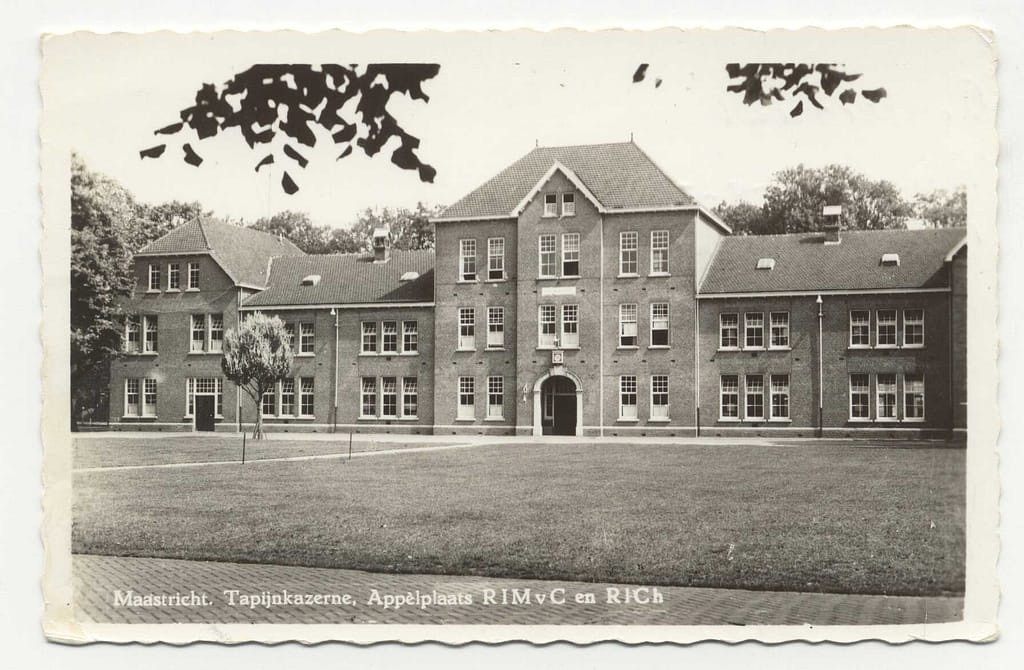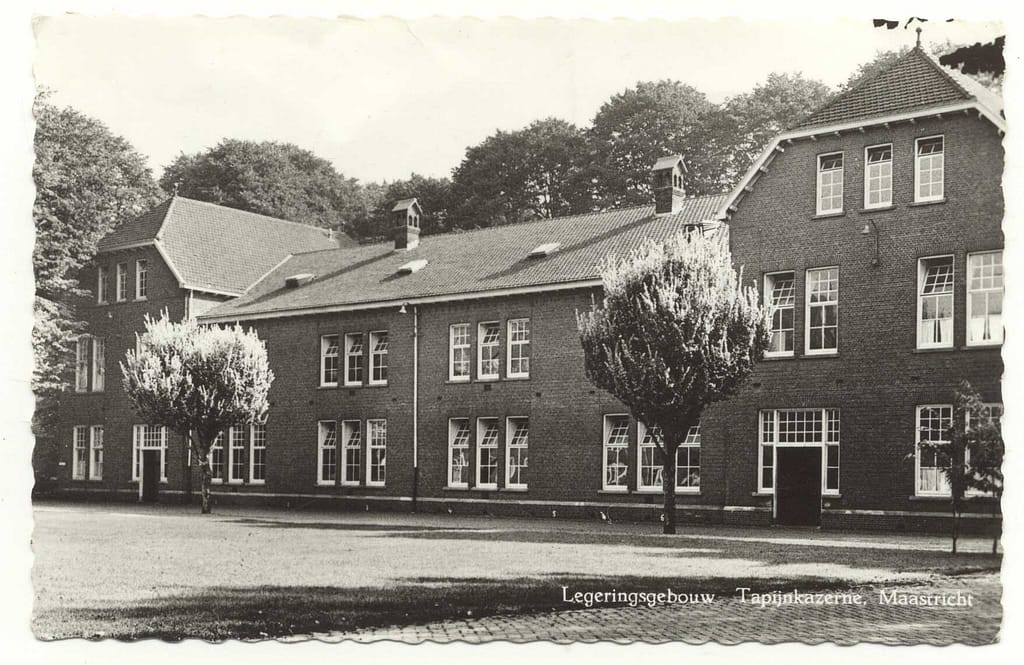In addition to dorm rooms, there are also company offices, laundry rooms, and night latrines in the pavilions. The attics house two dressing rooms, and, in times of need, parts of the attic could be used as additional dorm rooms. The central pavilion differs from the other two in that it has an ‘intermediate office structure’: this building has an additional three-storey central section, covered by a hip roof. Above the windows of the first floor, there is a name stone with ‘TAPIJNKAZERNE’ (Tapijn Barracks) on it. The barracks did not get this name until 1934.
Each pavilion housed 220 enlisted men and 16 non-commissioned officers.
In the original design of the barracks, the enlisted men ate their meals in the dorm rooms. In these rooms, each soldier had a bed with one shelf above it, and a footlocker in which to store personal belongings. The dorm building had a washroom and a night latrine. Outside of the dorm buildings, there was a separate bath house and there are two latrine buildings.
In 1954-1955, the three pavilions were modernised and the existing night latrines were converted into fully-fledged lavatories and the latrine buildings were taken out of use.
When AFCENT moved into the barracks in 1967, the buildings were renovated and updated to meet the demands of the time. Among other things, this had to do with the fact that it was much more difficult for the international soldiers to go home for a weekend and were, therefore, offered more comforts in terms of housing. For example, the number of large dormitories was reduced, and rooms that included with seating areas were added.
The name Tapijn Barracks
Until 1934, the barracks had no real name. Initially, they were called the New Barracks, and later renamed the Barracks in the Basin or the Barracks of the Thirteenth Infantry Regiment. The Ministry of War launched a charm offensive in 1934, giving a name to eighteen nameless barracks around the country. For the barracks in Maastricht, the Ministry chose the name of Sebastiaan Tapijn and so they became the Tapijn Barracks. Contractor Wijnants had the honour of adding the name in stone to the façade of Pavilion III.
For each barracks, the Minister had a document drawn up explaining the merits of their namesake.
In 1579, fortress architect Tapijn, or rather Tapin, who came from Lorraine, was commissioned by William of Orange to put the fortified town of Maastricht in a state of defensive readiness. During the siege by the Spaniards in that year, he took command of the defences. He managed to safeguard the town from the beginning of March until June 29, when the Spaniards took the city by storm.
As far as we know, there is no portrait of Tapijn and his date of birth is also unknown. His fate after the capture of the fortified town in 1579 is the subject of several stories. They all come down to the fact that he was injured and eventually died. In the document, he is termed a ‘most brave officer’.


